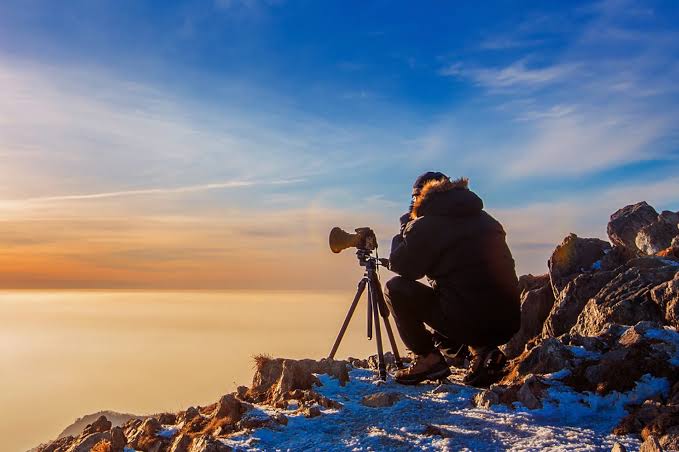Master the art of travel videography with tips on pre-production planning, effective filming techniques, and compelling storytelling. Learn how to capture and edit stunning destination videos, optimize for sharing, and engage your audience. Discover how to create immersive travel videos that resonate with viewers.
Travel videography is a creative way to combine storytelling and visual exploration giving audiences a taste of different places and cultures. Using video to showcase destinations allows creators to capture the vibe and ambiance of locations in a way that pictures alone can't. To succeed in travel videography it's important to learn about the process from planning before the shoot to editing afterwards. This guide will explore how to effectively capture destinations with tips and techniques to improve your travel videography abilities.
Pre-Production Planning
To create travel videos that are captivating it's essential to invest time in planning before you start shooting. This stage involves doing research, setting goals and preparing in advance to ensure your video truly reflects the charm of the place you're visiting.
Thorough research and exploration of the destination are crucial before you arrive. Familiarize yourself with its attractions, cultural landmarks and any local events or festivals that could make for interesting footage. Utilize resources like travel blogs, social media platforms and official tourism websites to gather valuable information. If possible consider scouting the area beforehand to pinpoint shooting locations and outline your filming schedule.
Clearly defining the purpose of your travel video is important. Decide whether you want to focus on activities, cultural experiences or the stunning landscapes. By establishing objectives you can create a narrative and choose footage that aligns with your vision.
Equipment Selection: Choose the gear that suits your goals and the type of location you're visiting. Important equipment might consist of a camera, stabilizer, drone and different lenses. Keep in mind the durability of your gear especially when venturing into areas or challenging terrains.
Planning and Outlining: Create a draft script or storyboard for your video. Identify the key moments and transitions and plan out the overall flow of the video. A storyboard is useful for visualizing the end result and ensuring that you address all the key features of the location.
Filming Techniques
The success of travel videography hinges on filming techniques. Capturing footage requires a blend of skills and inventive approaches.
Composition. Focus on composition to craft visually captivating shots. Employ methods like the rule of thirds, leading lines and framing to elevate your footage. Explore angles and viewpoints to introduce variety and dimension to your video.
Lighting. Make use of light to your advantage. The soft and warm illumination associated with morning and late afternoon known as the golden hour enhances the visual appeal of your footage. Stay attuned to lighting throughout the day and adjust your settings accordingly.
Stabilization. For footage utilize stabilization tools like a gimbal or steadicam. Steer clear of movements that can diminish the viewing experience. Hone your camera movements and consider incorporating a drone for shots to provide a perspective.
Sound and Audio: It's important to focus on the quality of sound since it plays a role in the overall video experience. To make your video more immersive capture sounds from the environment like waves crashing or people talking on the street. If you need interviews or dialogue consider using a microphone for clarity.
Storytelling and Editing
After capturing your footage the next step is to focus on storytelling and editing. This stage involves shaping a narrative and polishing your video to produce an engaging final product.
Building Your Narrative: Create a structure that guides viewers through the video. Consider using a mix of visuals, voiceovers and text overlays to convey information and tell a story. A well organized narrative keeps viewers interested and provides context.
Editing Process: Use software to piece together your footage into a seamless video. Techniques like adjusting colors, adding transitions and choosing music are vital for boosting the appeal and emotional resonance of your video. Make sure the pacing and flow of the video match the narrative.
Soundtrack Selection: Pick a soundtrack that fits the tone and theme of your video. Music has the power to stir emotions and enhance the storytelling element. Ensure you have the rights or licenses for any music included in your video.
Review and Polish: Once the first round of editing is done reach out to friends or coworkers for their input. Their suggestions can offer perspectives and assist in perfecting the video. Make changes to enhance the videos quality and flow.
Publishing and Sharing
Once you've finished editing your travel video it's time to share it with your audience. This step involves choosing platforms and strategies to reach as many people as possible and keep them engaged.
Selecting Platforms. Pick the right platforms to showcase your video, like YouTube, Vimeo or social media. Each platform has its own audience and formatting guidelines so make sure to customize your video and its description for each one.
SEO Optimization. Improve your videos visibility on search engines and platform algorithms by incorporating keywords, tags and descriptions. Design an eye catching thumbnail and title to grab viewers attention and encourage them to click.
Marketing Your Video. Spread the word about your video through channels such, as social media, travel forums and blogs. Interacting with your audience through comments and feedback can also help you build a dedicated following.
Conclusion
Travel videography is an art form that allows you to showcase the beauty and charm of places. By putting effort into planning before filming honing your skills and focusing on storytelling and editing you can craft travel videos that truly connect with your audience. Using gear paying attention to details and having a narrative framework are essential for creating content. Strategically sharing your videos ensures they reach an audience and make a lasting impact. With passion and creativity travel videography can serve as a fulfilling and meaningful way to venture out into the world.
